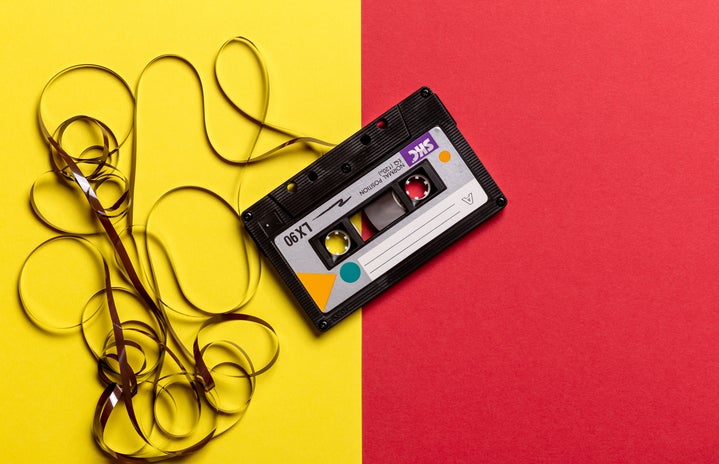Are you into vintage aesthetics? Do you want to give your home a retro feel? Here are some decor, furniture, and appliance items that can help retro-fy your living space, along with a peek into their origins and history.
- A Lite-Brite
-
A Lite-Brite is the perfect small accessory to decorate and retro-fy a bedroom or living room. The history of this iconic toy is nicely summarized by the US National Museum of Play, which paraphrases Tim Walsh, author of Timeless Toys and the Playmakers Who Created Them. The creators of the Lite-Brite first came up with the idea for it in 1966. The story goes that Marvin Glass, Henry Stand, and Burt Meyer of the Chicago toy design firm Marvin Glass and Associates were visiting NYC for the 1966 Toy Fair. (Fun fact: the Marvin Glass firm is also behind the iconic board games Operation and Mouse Trap.) They were inspired to create the Lite-Brite when they were walking down Fifth Avenue and found a dazzling display with hundreds of lights.
At first, they thought it might be too difficult to make a safe light display toy that would also be cost-effective to produce. Luckily, Meyer managed to come up with something. His idea was to take a box with holes on the front and place a light bulb inside. Then, covering the front with black paper, he inserted semi-clear colorful pegs into the holes of the box to create an image. Once the bulb was turned on, light would shine through the pegs, revealing the image or design. The group pitched their prototype to Hassenfeld Bros, i.e. Hasbro, who agreed to a deal in an hour. The company continues to manufacture the Lite-Brite today.
I had a Lite-Brite while growing up in the early 2000s, but the toy was donated to the thrift store at some point. I loved making designs and pictures with it as a kid, and it carries a lot of nostalgia for me. While thrifting a few months ago, I came upon another Lite-Brite, this one a smaller version from 2010, and of course brought it home with me. It is currently sporting a flower design and sits atop my desk for a light retro touch.
- A Chintz Couch
-
Chintz is a floral tapestry-style fabric and would be best described as grandma-chic. The fabric was very big in the 80s and could be found anywhere from dresses to curtains to couches. It’s a bit controversial, with some people loving it and others wanting to burn it to the ground. A chintzy couch or loveseat can add some retro spice to any room in your home, and you’d probably have no problem finding one at your local thrift store for pretty cheap. The history of the fabric goes back much further than the 80s though and has its fair share of problematic associations.
Recounting Sarah Fee’s description of chintz in her book Cloth that Changed the World, BBC journalist Joobin Bekhrad explains that the word chintz originates from the Hindi word chint, which means ‘spotted’ or ‘speckled’. In fact, the fabric originated thousands of years ago in what is today India and Pakistan. Chintz is commonly understood as a glazed floral fabric, or one with a lustrous finish added to it. Technically speaking, however, chintz is just cotton that has had mordants and resists added to it, substances that help dyes stick to a fabric. Over time, and especially in the 19th century, chintz started to be used to refer to any shiny floral fabric.
This fabric gained unprecedented popularity around the globe in 1498 when Portuguese explorer Vasco da Gama reached India and brought Indian cottons back with him to Portugal. Soon enough, European traders began exporting Indian chintzes all over the continent, with the fabric’s popularity reaching its height in the 17th century. During this period, it was mostly used as a cloth in interior design, but things changed in the mid-17th century when it started being incorporated into clothing. Local European textile merchants were not pleased about the trend for Indian chintz as it undercut their business. They protested against the importation and sale of the fabric, successfully getting it banned in France from 1689 to 1759 and in Britain from 1700 to 1774. Chintz traders were even threatened with execution at times, but they continued smuggling the fabric into Europe anyway and it continued to be worn.
Thanks to technological innovations in the 18th century, it became possible for European manufacturers to make their own chintz locally, but the continent was still dependent on Indian manufacturers for cotton base cloth. So, the US developed its own cotton, but it came at a horrific price. European cotton farmers enslaved people from West Africa to cultivate their cotton. They also removed Indigenous populations from the land now known as America to make room for cotton fields.
Chintz mostly fell out of fashion in the 19th century. This was because of new minimalist fashion trends in Europe and an Arts and Crafts movement in Britain which rejected industrial production in favor of handcrafts. However, it began to make a comeback in the 1960s and especially in the 1980s, as you can very evidently see in all the discarded 80s chintzy clothing at thrift shops. Many current designers have started to incorporate vintage chintz fabrics into patchwork-style clothing. Chintz is the fabric we love to hate, and it would make an excellent retro addition to any home.
- Pastel Appliances
-
Home appliances in colorful pastel shades became widely popular in the 1950s. Sprucing up your kitchen with some colorful fridge or toaster is just the thing to retro-fy your room. Recently, these appliances have made a comeback, with brands like Smeg and Big Chill recreating the 1950s ones, as reported by Bridget Mallon for Elle Decor. But why the sudden boom in pastels during this period?
Citing Daniel Niemeyer’s 1950s American Style: A Reference Guide, Mallon notes that the end of World War II contributed to a new taste for bright colors. Khakis and browns were replaced with pinks and yellows to represent a new, exuberant age. Another factor in the rise of pastels in home appliances was the layout of 1950s homes. Citing a NYT article from 1985, Mallon points out that kitchens in this period were typically kept separate from the rest of the home, contrary to the open floor plans that arrived later. The kitchen didn’t have to blend in with the rest of the home, so pastels in one room didn’t feel overwhelming or over-the-top. Over time, as the open floor model was adopted, homeowners increasingly opted for neutral colors like white, causing pastel appliances to go out of fashion.
There you have it, folks: three home items to help transform your space into a veritable time capsule. Got any other retro home items in mind that you’d like us to write about? Email us at hc.uwindsor@hercampus.com to let us know!


